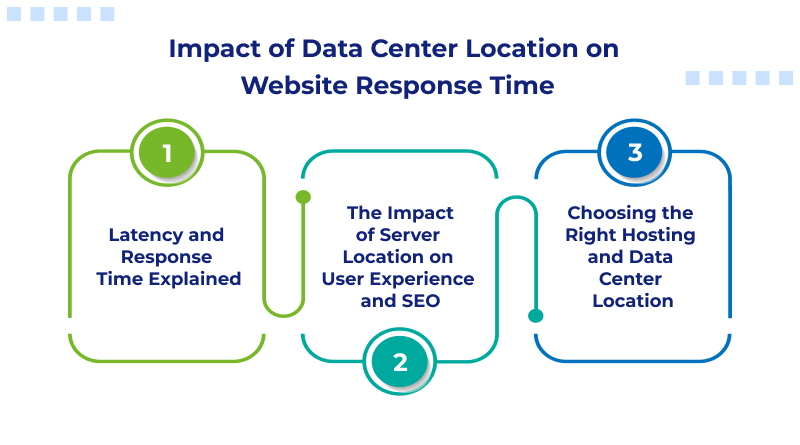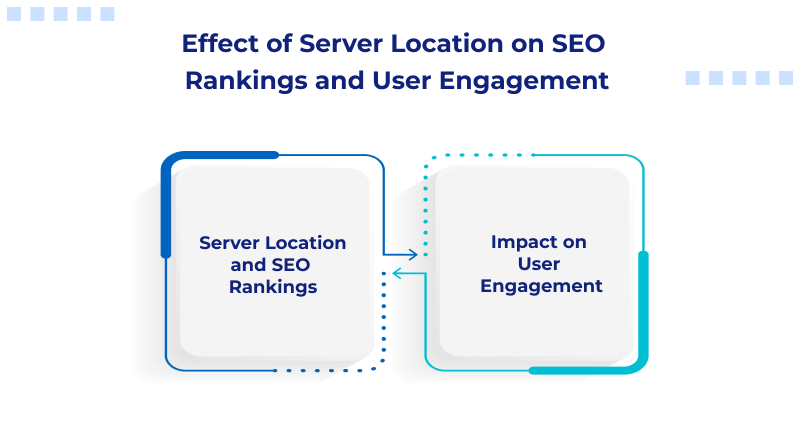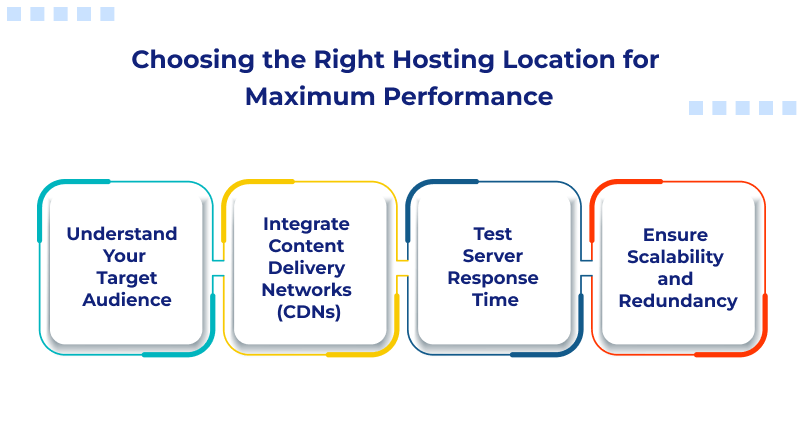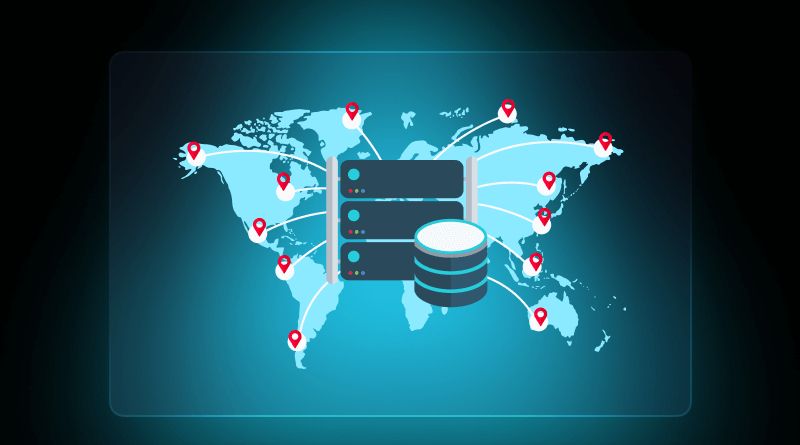In today’s accelerated digital era, server location is a prime determinant of the your startup website’s speed. It can either propel it to the top or slow it down to a snail’s pace.
Also, first impressions matter in this fast-moving digital world. Therefore, if your website doesn’t load quickly, potential customers won’t stick around and will immediately abandon shopping carts. This is a harsh reality; research has proved it.
The latest statistics underscore the vital importance of website loading time on user engagement and conversion rates. It has been highlighted that online eCommerce business websites that load in less than 1 second increase conversion rates almost 3 times higher than those that take 5 seconds to load. Also, the chances of potential customers bouncing increase by 32% when the loading time stretches from 1 to 3 seconds.
These valuable insights prove how the well-placed and well-chosen server location can reduce latency and drastically improve your website’s speed and user engagement. For startups trying to enhance website speed and increase conversion rates, selecting the right geographical positioning of a hosting server isn’t just a practical decision; it is necessary for attracting and retaining more customers.
The right data center location, closer to your target audience, will play an important role in making sure that your website will provide fast and reliable user experiences, affecting your ability to transform visits into business opportunities.
Continue reading this blog as we explain how your server location can affect the performance of your startup’s website and also unleash the strategies for supercharging your website speed.
Table Of Content
Role of Server Location in the Success of Startup Websites
The server or data center location represents the geographical location of the hosting server where all your website’s data is hosted and managed securely. It is one of the most important factors because it can have a drastic impact on various things related to website performance.
The actual location of the server with respect to the distance from end users hugely impacts the speed of loading times, latency, and user experience. The data center location also affects website security, regulatory compliance, and server costs. Placing your server strategically will ensure faster access and easy navigation of websites by your visitors.
Impact of Data Center Location on Website Response Time
Irrespective of how well you’ve designed your website and added compelling content to it, server location is the sole determining factor that is directly responsible for optimizing website speed and user engagement.

1. Latency and Response Time Explained
Latency is defined as the amount of time it takes the server to respond to a user request. When the server is far from the target audience, it takes longer for data to be transferred, thereby increasing latency, further delaying website loading, and annoying visitors. Contrarily, selecting a server location closer to your target audience will significantly increase response time and improve website performance and user engagement.
2. The Impact of Server Location on User Experience and SEO
As stated above, website loading time is the foundation for keeping high customer retention rates. Despite that, research shows that the chances of visitors leaving your website rise by 32% when the website loading times increase from 1 to 3 seconds. Not only that but search engines like Google consider website loading speed when deciding rankings. This means that slow-loading websites are more likely to rank lower, resulting in less exposure and limiting their reach.
3. Choosing the Right Hosting and Data Center Location
Startups must select the right web hosting server and data center location to improve website speed, boost conversion rates, and ensure instant response time. Similarly, integrating advanced Content Delivery Networks (CDNs) can further continue to streamline page load times by distributing the website content on multiple servers located worldwide and guaranteeing faster access to users everywhere.
In short, a well-selected server location is beneficial in improving startup website performance and speed. By selecting a hosting location near your website users and incorporating advanced technologies such as CDNs, you can offer a smooth and reliable website experience that promotes user engagement and supports achieving your business targets.
Effect of Server Location on SEO Rankings and User Engagement
Website performance has gained traction in today’s intensely competitive world, influencing SEO rankings (Search Engine Optimization Rankings) and user engagement. Server location—one crucial but often forgotten factor indicating the physical geographical location where your website is hosted—can be a game changer in improving your startup website’s online visibility.

– Server Location and SEO Rankings
When it comes to determining SEO rankings, Google and other search engines look at various factors, and usually, your hosting location is the one that can have a more significant effect. Even though Google doesn’t consider server location as the only SEO ranking factor in its algorithms, it does use it for geotargeting the content to various locations.
Take, for instance, a website with a “.de” domain is often given more priority in search results for customers based in Germany. In the same way, local SEO can be improved by selecting a hosting location near your users.
Search engines always evaluate your startup website’s hosting location and how relevant it is to its users in a specific region. So, it is important to match your data center location with your target audience’s geographical area, which helps you rank higher on the local search engine results.
– Impact on User Engagement
Server location directly affects loading speed. The farther the user is from the server, the greater the latency and the slower the loading speed. This delay can annoy the users, driving away user engagement and increasing the bounce rate.
In addition, quicker load times help create a good user experience, making users want to linger and engage more with your content. This user engagement results in increased conversion rates, as users are more likely to take desired actions on a website that loads quickly.
In short, although server location might not be a significant detail, its contribution to SEO ranking and user engagement is enormous. The load time, user experience, and search engine rankings all improve when your server location matches the geography of your target audience. If you need to reach globally, then CDNs can further enhance performance through improved delivery, allowing all users to revel in a rapid and engaging experience.
Overcoming Startup Hurdles: Server Location and Global Reach
Indeed, running a startup involves a lot of difficulties, from capital to customer acquisition. But another part, often overlooked but vital to startup success, is where your servers are located. As your enterprise grows and starts spanning around the globe, server location can determine how well a website performs, its users’ experience, and even the credibility of your brand. Understanding how server location impacts international reach is thus a key to bypassing some of the most prevalent challenges that startups encounter.
However, a single server location will not work for the type of startup that wants to provide a truly seamless experience in various countries. The hosting provider that hosts multiple data centers in different locations should be selected because multiple server locations can increase startup website performance for users around the world by offering lower latency and improved overall user satisfaction.
For instance, hosting your website in data center locations such as the United States, Europe, and Asia can provide faster response times to visitors from those locations. Major hosting companies such as MilesWeb provide scalable hosting solutions with several data center locations across the globe, allowing startups to reach audiences globally with ease.
Choosing the Right Hosting Location for Maximum Performance

– Understand Your Target Audience
Determine the main geographic areas of your primary audience. For instance, if your website mostly caters to United States users, have your server hosted in a data center within a large United States city.
– Integrate Content Delivery Networks (CDNs)
Integrate Content Delivery Networks (CDNs) to deliver the content of your website to several server locations throughout the world. For instance, if you run an international eCommerce website, a CDN can assist in serving content from servers in the United States, Asia, and Europe, ensuring faster loading for users in every region.
– Test Server Response Time
Perform server response time tests from different locations using software such as Pingdom or GTMetrix prior to choosing the server location.
– Ensure Scalability and Redundancy
Select a web host that offers scalable features and redundancy options.
Website Speed Optimization Regardless of Server Location
Website speed goes hand in hand with user experience, SEO ratings, and conversion rates. Many factors ensure the optimal performance of your website regardless of where the server is located. Below are some recommendations to enhance the speed of your website in cases where the server location is not very desirable for your target audience.
– Content Delivery Networks (CDNs) For Faster Data Transfer
Content delivery network (CDN) is a great tool that enhances the speed of a website by caching and delivering content from multiple servers that are strategically located in different locations all over the world. The use of CDN directs the users to the nearest server from where they can easily fetch the content; thus, latency is reduced, and load times are improved. This goes a long way in alleviating the challenges posed by long-distance server locations, as their load speeds would be increased, irrespective of the actual distance between the users and the server location.
– Implementing Caching and Image Optimization to Improve Website Speed
Caching in web hosting reduces server load and increases the delivery speed of static content like images, CSS files, or JavaScript. By caching this content either in the user’s browser or an intermediate server, the load time could be significantly reduced for repeat visitors. Also, the process of image optimization by compressing them without sacrificing quality allows for smaller file sizes and quicker rendering times. This is critical in decreasing the total load time of a website, making sure that no matter how far the server location is, it still operates fast.
– Opting For Easily Scalable Hosting Solutions for Unmatched Performance
Cloud hosting or a scalable VPS hosting solution ensures your website remains fast during traffic spikes. This flexibility helps scale things like bandwidth, storage, and CPU according to demand. Even during peak traffic periods, this assures your website will deliver speedy results, regardless of the server location. Selecting a provider with built-in scalability options ensures your website performance will not degrade as your company expands.
Case Studies of Businesses That Improved Conversions by Optimizing Website Speed
Improving website speed has been found to vastly increase conversion rates for businesses. These two are two classic examples from the last few years:
– MEDPLI Insurance Services
MEDPLI, a medical malpractice insurance brokerage, wanted to optimize its website to drive more conversions. They made several key modifications, including:
- Theme Optimization: Transferred to less code-intensive WordPress themes to enhance load times.
- Design Improvements: Redesigned product pages and state guides to include more calls to action and make lead form submissions easier.
These Modifications resulted in [vedadigital.io and marketingsherpa.com]:
Conversions increased by 2,767%, organic traffic increased by 1,714%, and growth in ranked keywords increased by 377%.
– TechSolutions
TechSolutions, a retail business, wanted to eliminate bounce rates and enhance conversions. They concentrated on website load-time optimization through [smescale.com]:
- Image Optimization: Compressed large images using an image compressor without impacting quality to minimize load times.
- Decreasing HTTP Requests: Streamlined the number of items on each page to minimize load times.
- Browser Caching: Enabled caching to have repeat visitors browse the website at a faster speed.
- Content Delivery Network (CDN): Provided a CDN for faster access to website content from anywhere in the world.
The results were profound:
A decrease in bounce rate by 20%, an increase in conversion rates by 15%, and a decrease in avg. page loading time by 50%.
Server location is a critical component in the determination of a startup’s website speed, user engagement, and overall website performance. Properly planned data center location leads to reduced response times, improved SEO rankings, and higher conversion rates. Startups that aim to reach an international user base, you must optimize server proximity, redundancy, and performance to give your website the competitive edge it needs to succeed.
FAQs
In what ways does server location affect website response time and ping time?
Server location plays an important role in affecting the response time and ping time since it relies on the physical distance between the server and the end user. The more distant the server, the longer data will transfer and the more latency will occur. A closer data center lowers ping time, boosts data loading, and hence enhances startup website performance. Other than the factor of distance, response times are also influenced by network traffic, routing policy, and server equipment.
What are the most important criteria that startups should consider when selecting their server location?
Latency, target audience proximity, server uptime, data compliance laws, scalability options, and cost-effectiveness must be considered by startups when selecting a server location. The use of CDNs and redundant data centers can also increase conversion rates and startup website performance globally.
How does server location impact international expansion for startups?
A server’s physical address decides how successfully a startup will spread its wings in other nations. It has an impact on how quickly the website loads, how good it is to access, and what ranking it enjoys in search results for various locales. Therefore, if a website is opened in a well-placed data center, it will facilitate reduced latency and quicker response times for worldwide users, which will result in a higher rate of user interaction and conversion.
What monetary aspects should you keep in mind when choosing different server locations?
While choosing server locations, one should take into account various financial considerations such as power expenses, bandwidth and connectivity charges, infrastructure and maintenance charges, regulatory compliance charges, and location near the target audience.








